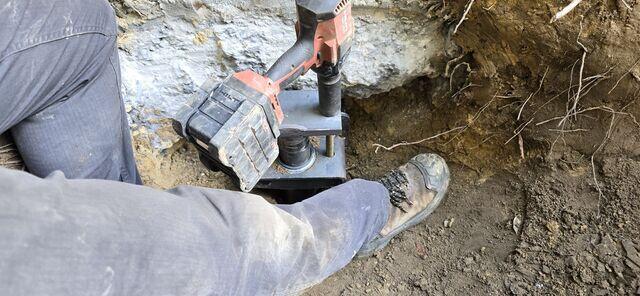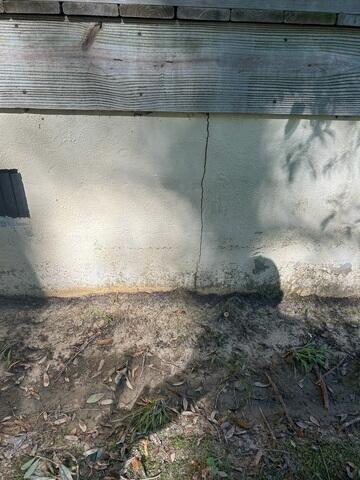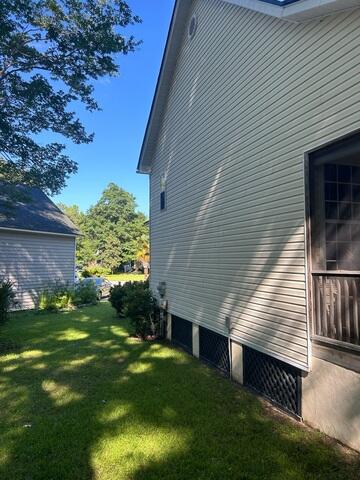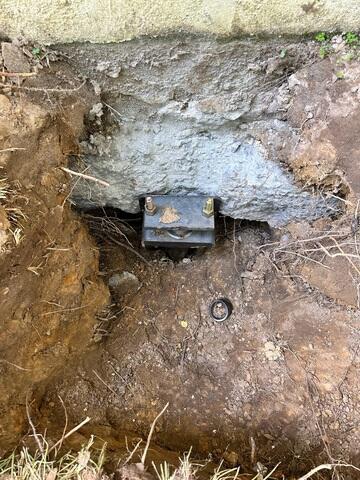
Pier Installation
Helical piers provide a reliable and long-lasting solution for foundation stabilization. They are quick to install with minimal disruption to the surrounding area, making them ideal for both residential and commercial projects. Additionally, helical piers can be adjusted to accommodate future changes in the structure, ensuring continued stability over time.

Installation Process
The installation process begins with driving the helical piers into the ground using hydraulic machinery until they reach stable soil or bedrock. Once the piers are in place, brackets are attached to the foundation and connected to the piers, transferring the load of the structure onto the piers. This method ensures a secure and stable foundation, even in poor soil conditions.

Settlement Crack
Cracks formed on the exterior foundation wall due to severe sagging/sinking. This can be caused by poor soil compaction, which fails to provide adequate support for the foundation. Additionally, excessive moisture or water leakage can erode the soil, leading to instability.

Pier Location
The crew marks off the location where the home is sagging the most. In this case, it's the back corner of the home. This is where they will be installing the helical piers for permanent stabilization.

Helical Pier Attached to Footing
The helical pier is attached to the homes footing. The helical pier is then screwed into the ground, providing additional support for the structure. The pier is used to provide stability in foundations and to prevent further settlement and help lift the home back to its original position.



.png)

